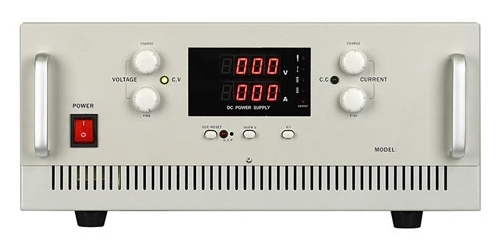Tips for Using a Linear DC Power Supply
A common feature of linear DC power supply is that its power device regulator tube works in the linear region, and the output is stabilized by the voltage drop between the regulator tubes. Due to the large static loss of the adjustment tube, a large radiator needs to be installed to dissipate it. Because the transformer works on the power frequency (50Hz), the weight is large. The advantages of this type of power supply are high stability, small ripple, high reliability and easy to make multiple channels. However, it is bulky and relatively inefficient. There are many kinds of linear DC power supply, which can be divided into regulated power supply and regulated current power supply from the output nature, and regulated and stable current (bistable) power supply that integrates voltage regulation and current regulation. Judging from the output value, it can be divided into fixed-point output power supply, band switch adjustment type and potentiometer continuously adjustable type. From the output indication, it can be divided into pointer indication type and digital display type and so on. So, what should we pay attention to when operating a variable linear DC power supply?

- Voltage setting: Turn on the linear DC power switch and adjust the voltage knob to adjust the voltage reading to the desired working power connection. If the voltage needs to be lowered, turn the potentiometer slowly so that the speed of the voltmeter's drop is compatible with the speed of the manual adjustment knob.
- Constant current setting: Connect the load, then set the current adjustment potentiometer to the minimum. Turn on the variable linear DC power supply, and then adjust the current to the desired current value.
- Set the voltage protection value: first adjust the voltage protection knob to the maximum to adjust the output voltage to the required protection value, then slowly rotate the DC power voltage protection potentiometer counterclockwise until the variable linear DC power supply becomes overvoltage protection. The voltage protection value usually needs to be about 10% higher than the operating voltage, so adjust the output voltage to be about 10% higher than the required voltage, then turn the voltage protection potentiometer counterclockwise until the DC power supply is overvoltage protected.
- Set the current alarm value: First turn the current alarm knob to the maximum to adjust the output current to the desired alarm value, then turn the current alarm potentiometer counterclockwise until the power supply emits an audible and visual alarm.
- When the linear DC power supply is turned on or released from the load, the reading of the voltmeter will jump immediately, which is normal.
- If you need to turn on the linear DC power supply again after turning it off, please wait for a while.
- If there is no output during use, please check the fuse first. If the fuse blows multiple times, the linear DC power supply may be faulty, stop the machine at this time, and ask professional maintenance personnel to repair it.
- Automatic trip function is configured to protect other components and loads in the linear DC power supply from damage. Automatic tripping during normal use means that the power supply may be faulty. In this case, please turn off the power first, and then turn the voltage protection knob to the maximum (do not turn the voltage adjustment knob). If it still trips, it means the linear DC power supply needs to be maintained.

